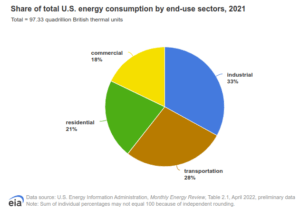How the World Really Works
by Vaclav Smil
How the World Really Works by Vaclav Smil advances the societal conversation about climate change. Smil has written dozens of books and academic papers about energy. And he is a professor at the University of Manitoba. In short, he is an expert, so his contribution should be welcomed by anyone interested in environmentalism, politics, or climate change.
Smil uses historical information and data to show how modern civilization, far from being at the cusp of turning its back on fossil fuel dependence, is more likely to continue its current trajectory of using ever more in the years to come. And he explains that even if stepping away from fossil fuels was an uncontested objective, actually shifting society away from fossil fuels would be very complicated in the near term.
Smil dedicates an early chapter to fossil fuels as a source of electricity generation. And another to how fossil fuels provide an unparalleled, dense, mobile energy source for modern transportation.
These chapters, though important and informative in their detail, will hardly budge societal discourse. However, Smil’s following chapters about the “4 pillars of civilization” are hugely important, and their themes are too little discussed.
Smil’s 4 Pillars are Ammonia, Concrete, Steel, and Plastics.
Ammonia is the bedrock of modern mass-scale agriculture. It is essential for fertilizers the world over. According to Smil, “…in 2020, nearly 4 billion people would not have been alive without synthetic ammonia.” Almost half the world’s population owes its life to fertilizer. That was news to me!
Smil’s information about historical crop yields and the number of hours necessary to produce a single kilogram of wheat flour without petroleum-based fertilizers was enlightening. For visual learners, Smil even gives a tomato salad recipe. In it, each tablespoon of olive oil counts for an equivalent tablespoon of diesel oil. Thus the reader can see how much fossil fuels are integrated into their every meal.
Likewise, Smil tells how much diesel fuel is needed to get various seafoods, chicken, and flour into the average kitchen.
Concrete, Steel, and Plastic get similar if less delicious treatment. The reader quickly realizes that the debate about fossil fuel use is out of focus and perhaps too sensational. Limiting greenhouse gases from going into the atmosphere will take more creativity and changes than most people believe.
Nevertheless, breaking the intimidating monolith of climate change into the various subsets of electricity generation, transport, and material production allows us to develop better-targeted strategies to confront climate change.

So as not to give the wrong impression, Smil is no climate change denier or obstructionist. He favors people limiting their red meat consumption, adding more insulation to their homes, and minimizing food waste. I couldn’t speak to Smils other opinions. But Smil has lived through enough seeming global crises that he is desensitized by environmental alarmism and unpersuaded by fanciful tales of techno-optimists.
Smil calls himself a scientist. And he thinks conversations should be grounded in data and facts.
Sometimes non-fiction books get more favorable reviews based on the information they share than they would merit otherwise on their style alone. How the World Really Works should be counted in this category, but it is not too much of a sleeper, even so.
Did you read How the World Really Works? Did it give you any new information?